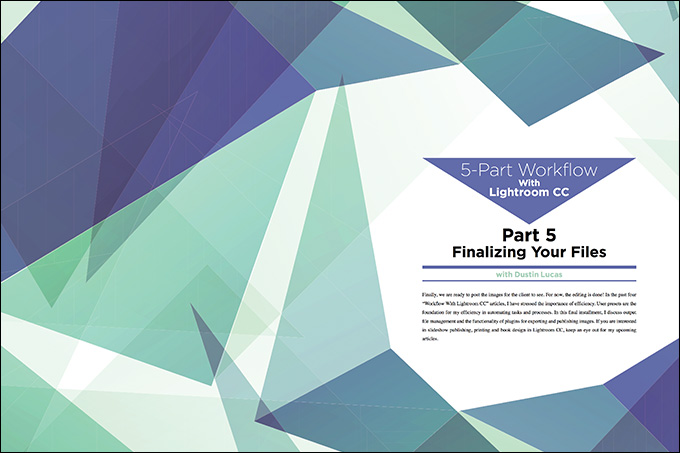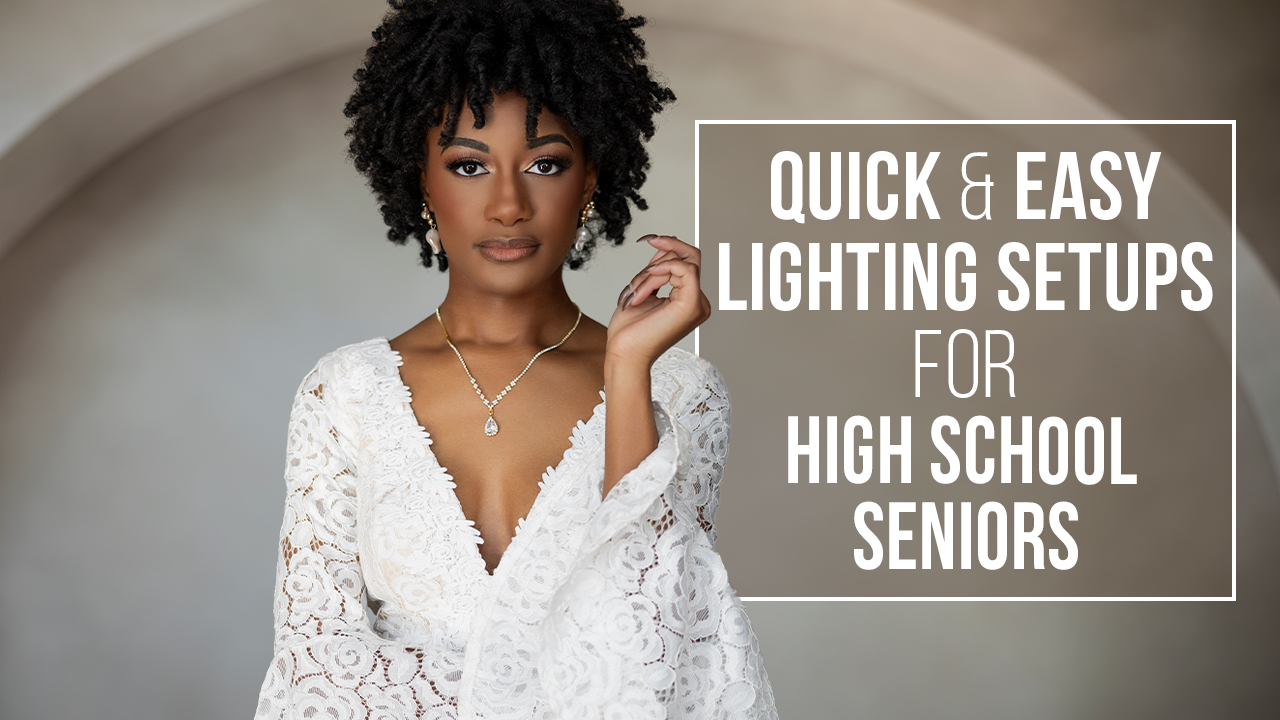5-Part Workflow With Lightroom CC Part 5: Finalizing Files with Dustin Lucas
Finally, we are ready to post the images for the client to see. For now, the editing is done! In the past four “Workflow With Lightroom CC” articles, I have stressed the importance of efficiency. User presets are the foundation for my efficiency in automating tasks and processes. In this final installment, I discuss output file management and the functionality of plugins for exporting and publishing images. If you are interested in slideshow publishing, printing and book design in Lightroom CC, keep an eye out for my upcoming articles.
File Sorting
Before we jump into output and export techniques, we need to manage the order of our files. Sorting files in Lightroom is as easy as choosing capture time, added order, file name, custom order, etc. using the Sort By feature in the Library module. (Image 1) These four options seem to be the more popular choices for sorting images. I sort by capture time. This requires the capture or shot time of the files to be synced between cameras. Those of you who do this in-camera prior to shooting know how important this is.
Start by locating a prominent moment when all the cameras were photographing at once. I suggest locating the first look or ceremonial kiss. It’s easiest to use an image with both subjects present, and the same split-second pose is captured between cameras. Images like E1V9639.cr2 and M9V3417.cr2 are good, but the posing is difficult to match. (Image 2) A more suitable choice would be the first kiss, E1V1016.cr2 and M9V4132.cr2. This back bend is very specific to the moment, and luckily it was captured between both cameras. (Image 3)
We need to select the main shooter’s image first, E1V1016.cr2, and head to the Library module. Navigate to the panels on the right side and click the arrow next to Metadata. The 14th option down is Capture Time; click the metadata button to the right. You will need to remember the date and time, so write them down. (Image 4) Now go to the second shooter’s image, M9V4132.cr2, and filter the images by their camera only. Select all images and follow the same steps to edit the capture time. (Image 5) Match the date and time you previously wrote down, and click Change. That’s it. You have changed the capture time, and you can now sort by this category to order your images. (Image 6)
File Naming
Now we are ready to rename these images to organize them for the client. Select all the images, navigate to the Metadata panel and click the button next to File Name. Lightroom defaults to “Filename” for the file naming field. Click in the file naming field and select Edit from the drop-down options. (Image 7) You can now fully customize your file naming workflow. (Image 8)
A popular choice is to insert the bride and groom’s name with sequence numbers at the end. To change this, click in the white text field and delete the current file naming category. Type in the first names of the bride and groom, and leave a space at the end. Then, under Sequence and Date, click in the first category field and choose Sequence # (0001). You can view the file name example above the white text box to double-check. (Image 9) At the top, you will notice there is a preset category; click in this field. Select the option Save Current Settings as a New Preset and name it “wedding” or something to familiarize yourself with this naming structure. (Image 10) Of course, once you select this preset for another event, you must edit the names of the couple.
Installing Lightroom Plugins
Jumping ahead to installing plugins for Lightroom will allow you to export and/or publish your images directly to your online proofing websites. First, download the plugin(s) you wish to use. Then, go back into Lightroom and click on File > Plug-in Manager in the menu bar. From this dialog window, you can search on Adobe for add-ons or add your manually downloaded plugin. (Image 11) Let’s choose Add at the bottom of the plugin list and choose the newly downloaded file. I have downloaded plugins for SmugMug, ShootProof and ProShow Web. (Image 12)
Exporting Files
Exporting files from Lightroom is quick and easy. Select all the desired files and choose File > Export to begin choosing your settings. This is where user presets can be a huge timesaver in your workflow. I generally make export presets for many of my advanced edits for Photoshop. Things like skin smoothing in Portraiture and black-and-white edits in Nik Silver Efex Pro 2 are almost mechanical in how they work. (Image 13) Automate your mindless tasks like this by using droplets in your exports. For an in-depth breakdown of droplets, see the January 2015 issue for my article “Creating a Professional Workflow: Actions and Droplets.” It’s worth taking some time to get familiar with these; they are a part of my everyday workflow.
ProShow Web has a default preset built into the export module. (Image 14) This intuitive web-based slideshow interface has really given Animoto a run for its money. Even Sal has changed over. Once you are logged in through the export window, create a slideshow name and you are ready to export files directly into your account. It automatically resizes and saves the files in JPEG format for web-ready viewing and functionality. (Image 15) Doesn’t get any easier than that.
Publish Services
Lightroom is a bit lacking in terms of default publishing services like Facebook and Flickr, so I installed some more useful ones like SmugMug and ShootProof. Publishing services, which can be accessed in the Library module, allow you to filter your images for quick selection. When you publish images to the website, SmugMug’s plugin allows you to create galleries directly in Lightroom. These are set up very similar to Lightroom Collections in that the files do not move at all—they are virtually organized. Right-click on the specific publisher and choose Create a Gallery. Once you’ve named the gallery, the custom URL is generated for your SmugMug site. (Image 16) You can choose selected images or make virtual copies. Virtual copies work well when you want to apply different adjustment settings or individualized groupings for client-specific needs. Click Publish in the upper right-hand corner to finish the process, and your client images begin to load on the webpage. (Image 17)
ShootProof’s plugin has a similar interface that requires you to create a collection. Same basic principle: Choose the images you want to share and click Publish. It’s pretty simple. This is a streamlined process that negates having to export from Lightroom and then upload to the website. (Image 18) You do have the option to resize and rename files for both plugins. It’s sort of hidden in the Lightroom Publishing Manager. Click the “+” button next to Publish Services and choose Go to Publishing Manager. (Image 19) There are options for all the plugins installed in Lightroom. Many of the same export settings are included, as well as user presets. I wouldn’t suggest changing the image size, but it allows custom renaming for clients’ sites. (Image 20) I suggest renaming before exporting or publishing images, but there is a last-chance option as well.
Conclusion
You are now ready to start making some money on your images. Take your time sorting and renaming files. There’s nothing worse than having images out of order on your client site, which makes you look unprofessional. Many of these software developers work well together. Lightroom has plenty of efficient tasks at your disposal; you just have to take the time to learn them.
If time management is a rough area for you, get familiar with user presets and integrate them into your everyday workflow.




